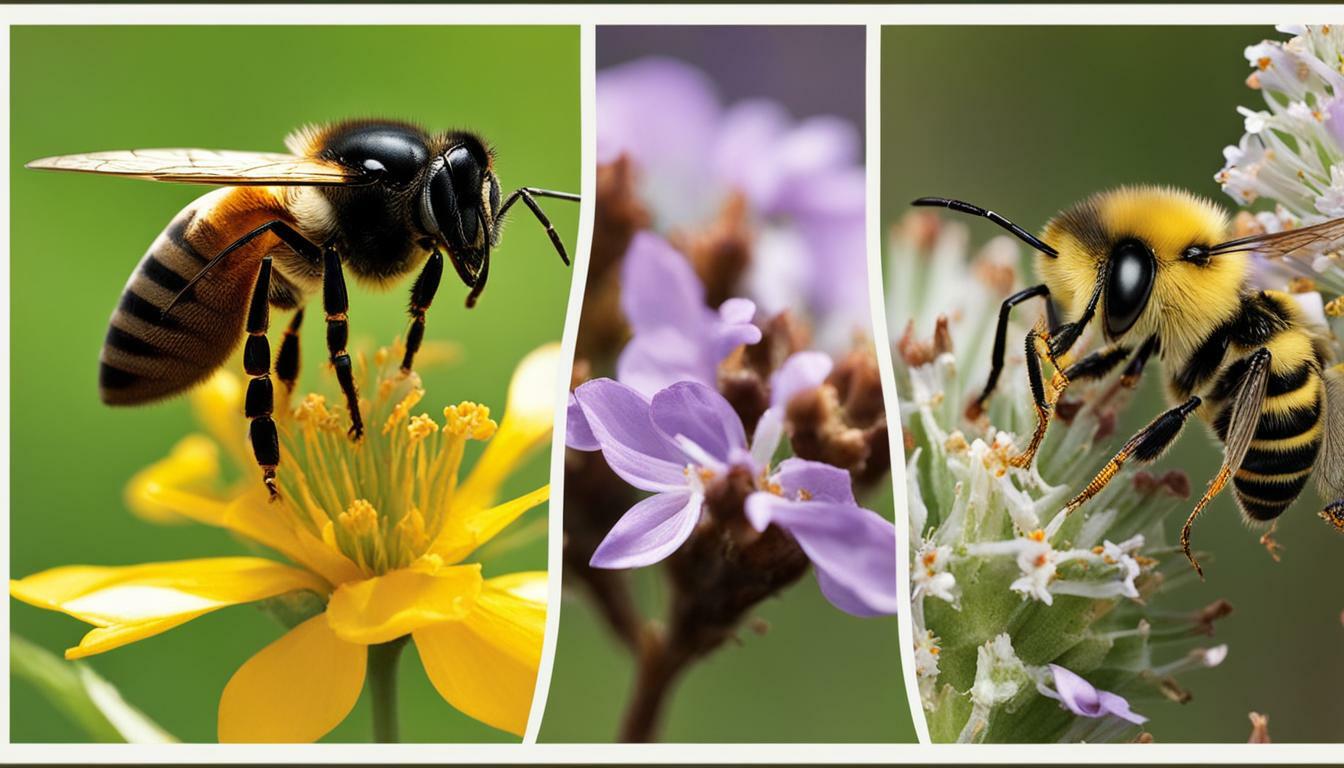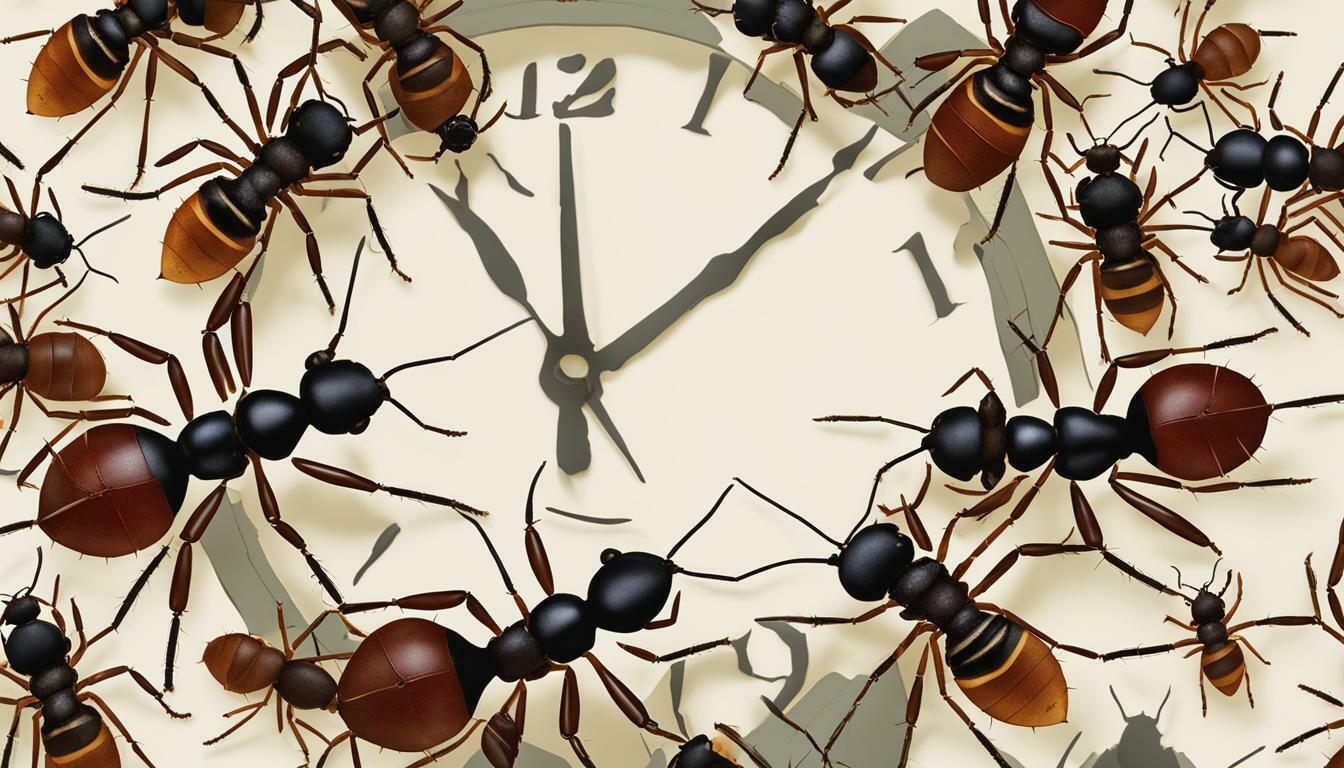Butterflies are fascinating creatures that exist in a variety of shapes, sizes, and colors. The Monarch and Viceroy butterflies, in particular, are two species that often get confused for each other due to their similar appearance. However, a closer look reveals distinct traits and features that set them apart.
In this section, we will explore the key differences between the Monarch and Viceroy butterflies. By understanding their unique characteristics, we can appreciate the beauty and diversity of these remarkable butterfly species.
Key Takeaways:
- The Monarch and Viceroy butterflies may share similar appearances, but they possess distinct traits that set them apart.
- Understanding their unique characteristics, behaviors, and habitat preferences can help differentiate them from each other.
- A comprehensive comparison between the Monarch and Viceroy butterflies can help us gain a better understanding of their differences and similarities.
Monarch Butterfly: Characteristics and Identification
The Monarch Butterfly (Danaus plexippus) is a majestic butterfly with striking orange and black wings that are adorned with white spots. They are one of the most well-known butterfly species in North America and are often used as a symbol of migration and endurance. The Monarch butterfly is often mistaken for the Viceroy butterfly due to their similar appearance, but there are several distinguishing characteristics that set them apart.
The Monarch butterfly has a wingspan of approximately 3.5 to 4 inches, with the male being slightly larger than the female. Their wings are orange with black veins and borders, and their wings also have white spots that resemble veins. The Monarch butterfly’s body is black with white spots and their antennae are clubbed at the ends.
One of the most unique characteristics of Monarch butterflies is their migration patterns. Unlike most butterfly species, Monarch butterflies migrate from North America to Mexico during the fall months and then return in the spring. This migration spans thousands of miles and is one of the most remarkable migrations of any animal species.
When it comes to identifying Monarch butterflies, there are several key features to look out for. These include their orange wings with black veins and borders, the white spots on their wings resembling veins, their black bodies with white spots, and clubbed antennae. Monarch butterflies are commonly found in open fields, meadows, and gardens, and are often seen feeding on milkweed plants.
Viceroy Butterfly: Traits and Similarities
While the Monarch butterfly is well-known for its striking appearance and impressive migration habits, the Viceroy butterfly is often overlooked despite having its own unique traits.
At first glance, the Viceroy butterfly may be mistaken for a Monarch butterfly due to its similar orange and black coloration. However, one distinction between the two species lies in their wing veins – the Viceroy butterfly has an extra set of veins that the Monarch butterfly does not possess.
Another similarity between the Monarch and Viceroy butterfly is their habitat preferences. Both species can be found in open fields, meadows, and along the edges of forests.
However, one of the key differences between the two species is their geographic range. While Monarch butterflies are native to North America, Viceroy butterflies can also be found in parts of Mexico, Central America, and northern South America.
Despite these differences, one remarkable trait that both the Monarch and Viceroy butterfly share is their ability to deter predators with their toxic chemicals. The caterpillars of both species feed on milkweed plants, which contain toxins that are harmful to many predators, making the adult butterflies toxic to predators as well.
In conclusion, while the Viceroy butterfly may share certain similarities with the Monarch butterfly, such as their habitat preferences and toxicity to predators, they possess distinctive traits that set them apart. By understanding these unique characteristics, we can fully appreciate the diversity and wonder of both species.
Comparing Monarch and Viceroy Butterflies
Monarch and Viceroy butterflies may look similar, but they possess distinct differences that set them apart. In this section, we will conduct a comprehensive comparison between these two species by examining their physical attributes, life cycles, and geographical distribution.
Physical Attributes: Monarch butterflies are larger than Viceroy butterflies, with wingspans ranging from 3.5 to 4 inches compared to Viceroy’s wingspan of 2.75 to 3.25 inches. The Monarch butterfly has a more vibrant orange color with black veins and white spots on its wings. The Viceroy butterfly, on the other hand, has a darker orange-brown color with black veins and lines that distinguish it from the Monarch.
Life Cycles: Monarch and Viceroy butterflies have similar life cycles, but they differ in their migration patterns. Monarchs undertake a 3,000-mile journey from Canada to Mexico during the fall, while Viceroys do not migrate at all. Both species lay their eggs on plants like milkweed, but Monarchs prefer to lay their eggs on the underside of the leaves, while Viceroys lay their eggs on the upper sides of the leaves.
Geographical Distribution: Monarch butterflies are found throughout North and South America, as well as Australia and New Zealand. In contrast, Viceroy butterflies are found only in North America, mainly in the eastern regions.
In conclusion, while Monarch and Viceroy butterflies may share some similarities, they have distinct features that allow us to differentiate them. By examining their physical attributes, life cycles, and geographical distribution, we can better appreciate the unique beauty and diversity of these remarkable butterfly species.
Conclusion
In conclusion, the Monarch and Viceroy butterflies may appear similar at first glance, but they possess distinct traits that set them apart. The Monarch butterfly features distinctive orange and black wings, while the Viceroy butterfly has a striking black line across its hind wings. Furthermore, Monarchs are larger than Viceroys, and their migration patterns vary.
By understanding their unique characteristics and behaviors, we can identify these remarkable butterfly species and appreciate their beauty and diversity. Whether you are a nature enthusiast, a butterfly collector, or just a curious observer, the Monarch and Viceroy butterflies offer a fascinating glimpse into the wonders of the natural world.
So next time you see a butterfly flutter by, take a closer look. You never know, it might just be a Monarch or a Viceroy, revealing its hidden secrets and captivating charm.
FAQ
Q: What are the main differences between Monarch and Viceroy butterflies?
A: Monarch and Viceroy butterflies may appear similar, but they have distinct differences. Monarchs are larger in size and have orange wings with black veins and white spots, while Viceroy butterflies are smaller with black-brown wings and a single row of white dots.
Q: How can I identify a Monarch butterfly?
A: Monarch butterflies can be identified by their large size, orange wings with black veins, and white spots. They also have a distinctive pattern on their hindwings, known as the “postmedian black vein.”
Q: What traits do Viceroy butterflies possess?
A: Viceroy butterflies have smaller black-brown wings with a single row of white dots. They also have a distinctive black line across their hindwings, known as the “discal band.” Viceroy butterflies are typically smaller than Monarch butterflies.
Q: How can I distinguish between Monarch and Viceroy butterflies?
A: To distinguish between Monarch and Viceroy butterflies, you can look at their wing patterns and sizes. Monarchs have orange wings with black veins and white spots, while Viceroy butterflies have black-brown wings with a single row of white dots and a distinct black line across their hindwings.
Q: Are there any similarities between Monarch and Viceroy butterflies?
A: Yes, there are some similarities between Monarch and Viceroy butterflies. They both belong to the Nymphalidae family, and their wing patterns can be confused from a distance. However, upon closer examination, their distinct traits can help differentiate them.



